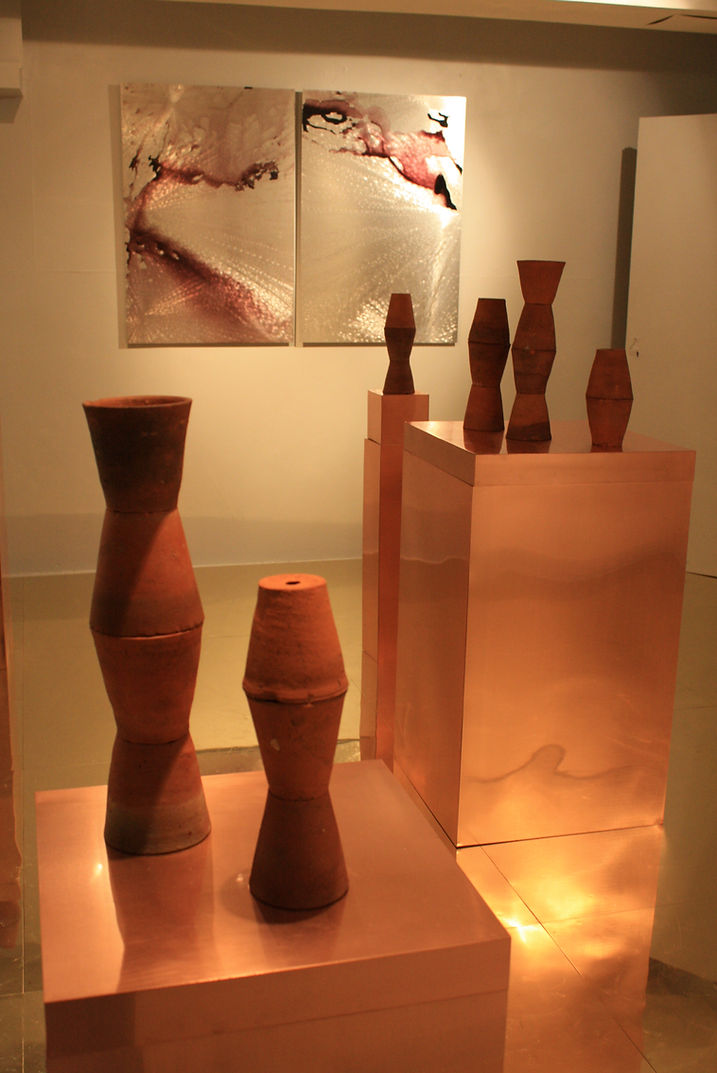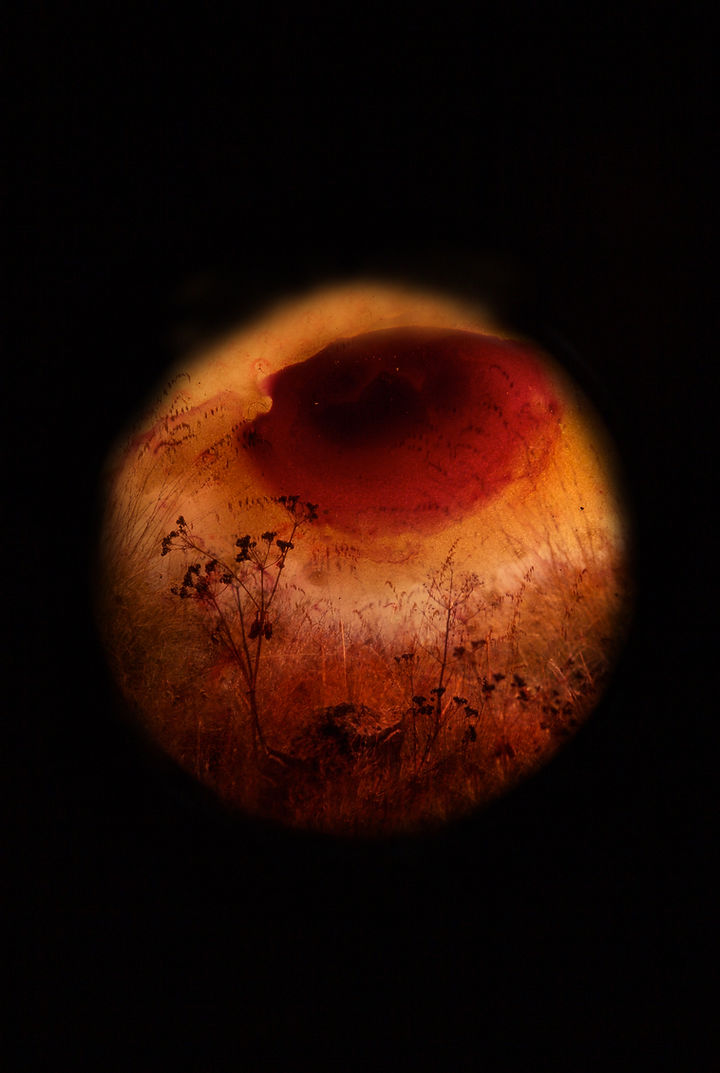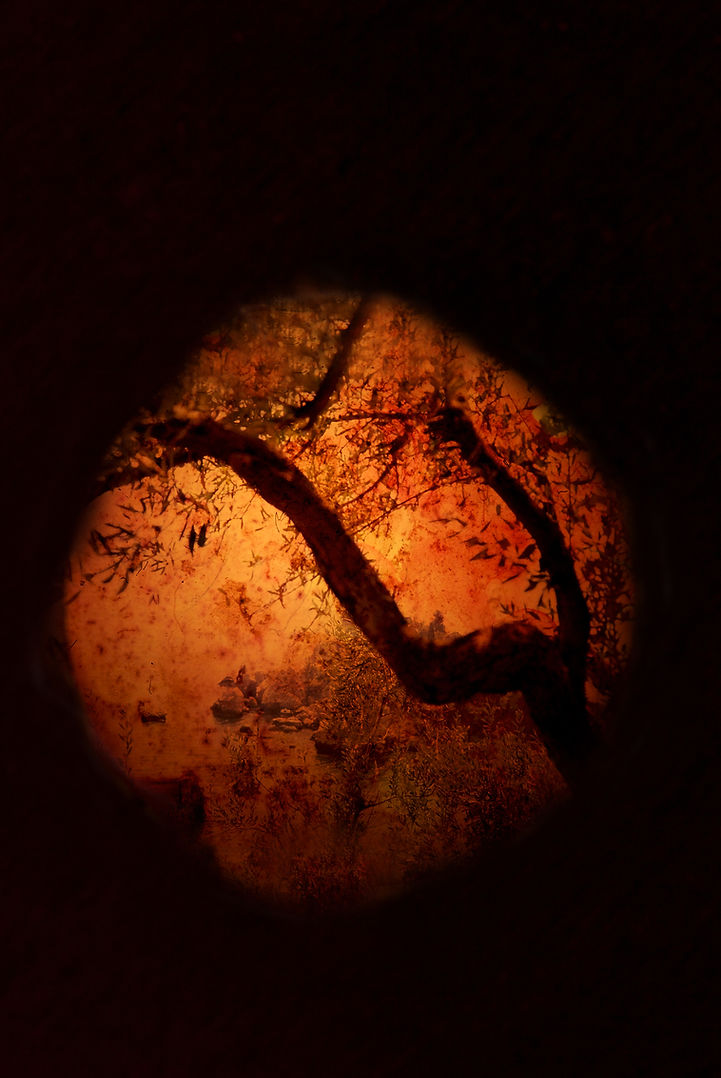A N N A B E L L E M O R E A U

THE OBSERVATORY, ISLAND OF THE CYCLOPS, view exhibition instalation, entrance, 2010

THE OBSERVATORY, ISLAND OF THE CYCLOPS, exhibition instalation, 2010
Maquette I-Tower, 35x45x45cm

THE OBSERVATORY, ISLAND OF THE CYCLOPS, exhibition instalation, 2010

THE OBSERVATORY, ISLAND OF THE CYCLOPS, view inside pot, mixed media on glass, 2010

THE OBSERVATORY, ISLAND OF THE CYCLOPS, terracotta pots on copper plinths, 2010

THE OBSERVATORY, ISLAND OF THE CYCLOPS, view inside pot, mixed media on glass, 2010

THE OBSERVATORY, ISLAND OF THE CYCLOPS, terracotta pots on copper plinths, 2010

THE OBSERVATORY, ISLAND OF THE CYCLOPS, view inside pot, mixed media on glass, 2010

THE OBSERVATORY, ISLAND OF THE CYCLOPS, exhibition instalation, 2010

THE OBSERVATORY, TOWER, view model, 2010

THE OBSERVATORY, VANISHING POINT, view model, 2010

THE OBSERVATORY, ISLAND OF THE CYCLOPS, view model, 2010
THE OBSERVATORY
THE OBSERVATORY is an installation which consists of three rooms, Tower, Vanishing Point, and Island of the Cyclops, each individually created to emphasize the nature of what they present: fragility, infinity and intimacy of space. Moreau addresses directly the viewer and empower him with the use of his senses; touch, vision and hearing, to reflect upon the fragility of the world he inhabits.
Room I: TOWER
The viewer is invited to step onto a floor entirely covered with terracotta pots turned upside down. As an initiation process, he is encouraged to attune with his senses, allowing his preconceptions and fears to be surmounted by his curiosity and engagement. By stepping onto this fragile object, the observer needs to respond to every movement and feeling arising from this experience. He becomes the holder of a unique and individual state, naked and receptive to the environment.
As he progresses across the floor, he enters a life-size card castle tower made out of cardboard. A copper disc is seemingly floating in the centre of the room. The object is made out of a copper foil, two black wooden planks holding the negative shape of a circle and four magnets. The weight of the wooden planks and magnets is counter-balanced by the weight of the six-metre-long rolled copper foil above it.
Triangles, rectangles, circles and cylinders are the basic shapes of the room. The space the viewer has entered and the elements surrounding him concentrate upon the notion of fragility and the reduction towards essence and absence. The dim light generated by the light bulbs, reflecting onto the surface of the material used, glows like gold, giving the support of the space an unreal preciousness and substantiality.
Room II: VANISHING POINT
The viewer enters a highly illuminated square space. The inner walls are made out of four hanging aluminium panels. The height of the room is restricted by a screen hanging off a few centimetres above the top of the aluminium panels. The surface of the panels is streaked by an infinite number of lines converging into vanishing points. As the viewer moves around the contained space, light changes as it is caught in the rays of the metal creating an ever-changing environment of an ever-changing quality.
The movement of the viewer, stepping and wandering into the space, activates the inert object. The room itself becomes real time and real space
Room III: ISLAND OF THE CYCLOPS
A golden room hosts five copper plinths, islands, onto which are carefully placed and piled small terracotta pots. Each pot has a function depending on the way it is placed. Some will produce a sound while others hold an image. As the sounds quietly rise from the pots the viewer is induced to progress towards the object where he will discover by peering into the small whole, a secret space.
Credits: Sponsors Celia & Jim Herbert
Thank you: Annabelle Selldorf, Jonathan Wood, Robert Rosenthal, Paul Buck
Sounds: recorded by Annabelle Moreau - mixed by Roberto Samperi